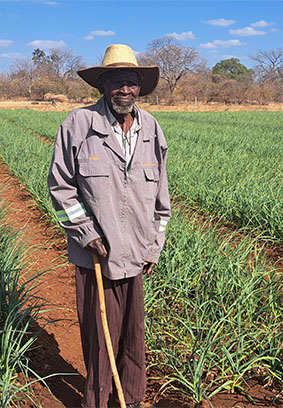-
No. 15 Coventry Street
Geodesy Building Harare -
Send an Email info@sacp.co.zw
-
Helpline & Support +263 711 492 458
SACP Project Management
EnquiriesOur work

Need Help! Get in touch quickly
Our work
The activities of SACP are organised in three mutually interdependent components as follows:
⦁ Component 1: Inclusive Value Chain Development
⦁ Component 2: Climate-Proof Value Chain Infrastructure
⦁ Component 3: Policy and Institutional Support and Project Coordination.
Component 1- Value Chain Development
This component is the key investment component of SACP. The component design reflects the situation Zimbabwe, in which the country’s gaps in smallholder-based value chain organisation result in low productivity and low farmer incomes. Challenges persist in commercial smallholder production systems and the financial sector is unable to channel urgently required financing for investments by smallholder farmers and agribusinesses. Component 1 is designed to address these challenges through the activities in three inter-related sub-components:
⦁ Cluster Identification and VC Mobilization
This sub-component’s expected results are:
⦁ eight smallholder production clusters identified
⦁ 800 Agricultural Producer Groups (APGs) mobilized and organized
⦁ 200 microenterprises (MEs)
⦁ 40 Value Chain Lead Enterprises (VCLEs) identified and mobilized.
Sub-component 1.2, Technical Services for APGs and Microenterprises:
The projected results of this sub-component are
⦁ 800 APGs received Business Development Skills (BDS) trainings and are able to complete bankable climate smart business plans
⦁ (ii) 200 MEs received BDS trainings and are able to complete bankable business plans, which comply with Environmental, Social and Governance (ESG) standards
⦁ (iii) 800 APGs implement Climate Smart Agriculture (CSA) practices. Technical services will target APGs and Agribusinesses identified through Subcomponent 1.1. A balanced gender and social inclusion will be ensured in the targeting of services, with special attention being given to women, youth and Persons with Disabilities.
Sub-component 1.3: -Financing for Inclusive VC Investments
SACP will co-finance, through a competitive selection process, privately owned and managed investments by smallholders and agribusinesses for VC upgrading. Matching grants (MGs) will be made available for 800 APGs, 200 rural microenterprises.
Additionally, 40 VCLEs will benefit from Line of Credit, which will be established at a selected financial institution, to initiate access to commercial bank financing for value chain development activities.
Component 2 – Climate Proofed Value Chain Infrastructure
Component 2 is designed to facilitate SACP’s investments in public and semi-public infrastructure. Specifically, the project will improve irrigation water supply and management, domestic water supply, and local-level feeder roads to facilitate the commercialisation of smallholder agriculture in its target areas.
Activities under this component are targeted at encouraging private sector investments in SACP areas
ii) promoting the production and marketing of large quantities of quality produce
iii) reducing the time and cost of transport to the markets.
Component 3
Component 3 is divided into two sub-components as follows:
⦁ 3.1. Policy and Institutional Support: This sub-component is designed to support efforts to create a conducive policy and institutional environment for private sector-led smallholder agriculture transformation in Zimbabwe.
⦁ 3.2. Project Coordination: This sub-component focusses on project coordination and covers the management functions of SACP, including the management of project implementation processes in the project’s provinces and districts and SACP, including financial management, procurement M&E, and knowledge management activities.
